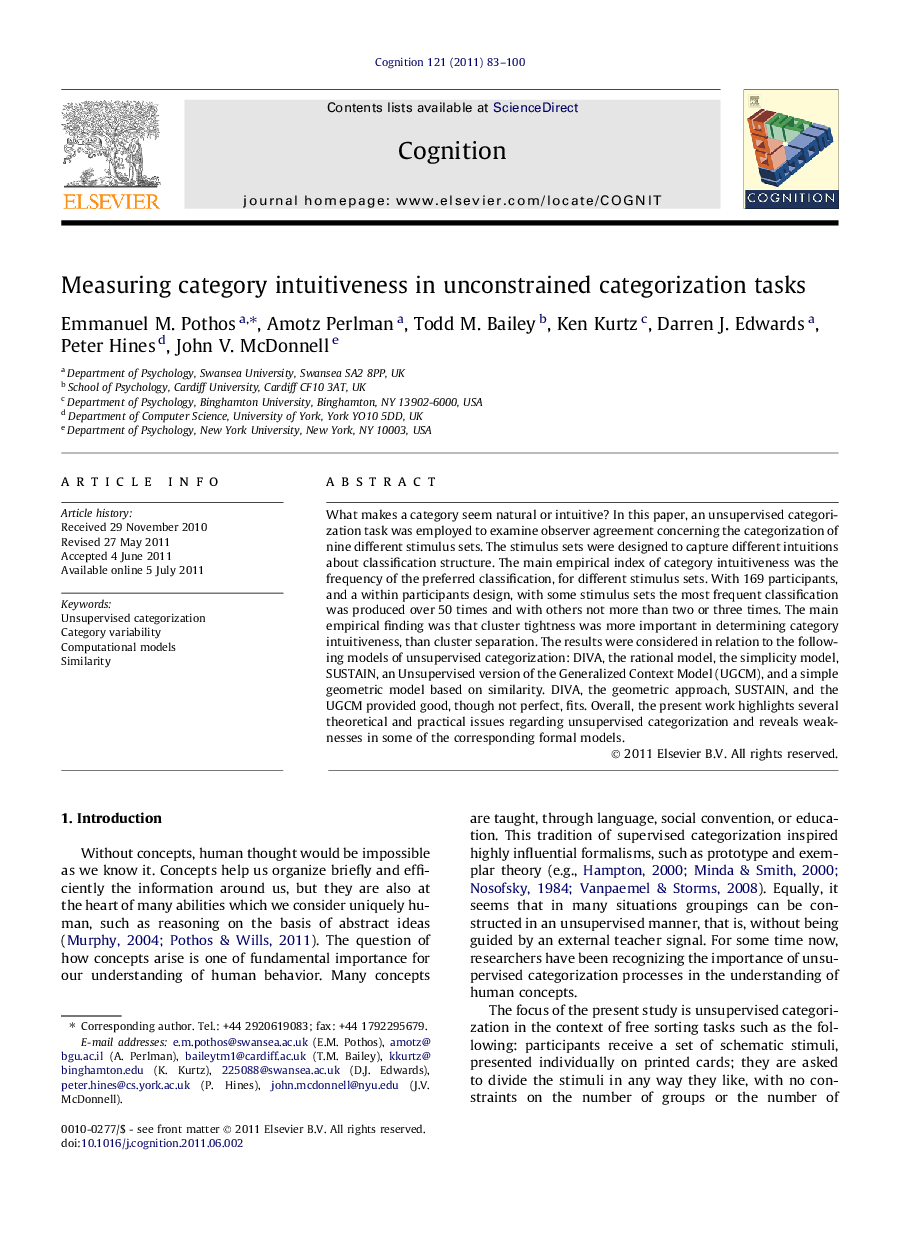| Article ID | Journal | Published Year | Pages | File Type |
|---|---|---|---|---|
| 926475 | Cognition | 2011 | 18 Pages |
What makes a category seem natural or intuitive? In this paper, an unsupervised categorization task was employed to examine observer agreement concerning the categorization of nine different stimulus sets. The stimulus sets were designed to capture different intuitions about classification structure. The main empirical index of category intuitiveness was the frequency of the preferred classification, for different stimulus sets. With 169 participants, and a within participants design, with some stimulus sets the most frequent classification was produced over 50 times and with others not more than two or three times. The main empirical finding was that cluster tightness was more important in determining category intuitiveness, than cluster separation. The results were considered in relation to the following models of unsupervised categorization: DIVA, the rational model, the simplicity model, SUSTAIN, an Unsupervised version of the Generalized Context Model (UGCM), and a simple geometric model based on similarity. DIVA, the geometric approach, SUSTAIN, and the UGCM provided good, though not perfect, fits. Overall, the present work highlights several theoretical and practical issues regarding unsupervised categorization and reveals weaknesses in some of the corresponding formal models.
► We examined unsupervised categorization processes. ► Participants spontaneously classified stimuli in nine sets. ► More intuitive classifications were assumed to be more frequent ones. ► Cluster tightness was the most important determinant of category intuitiveness. ► The results were modeled with DIVA, the rational model, the simplicity model, SUSTAIN, an unsupervised version of the GCM, and a similarity geometric model.
